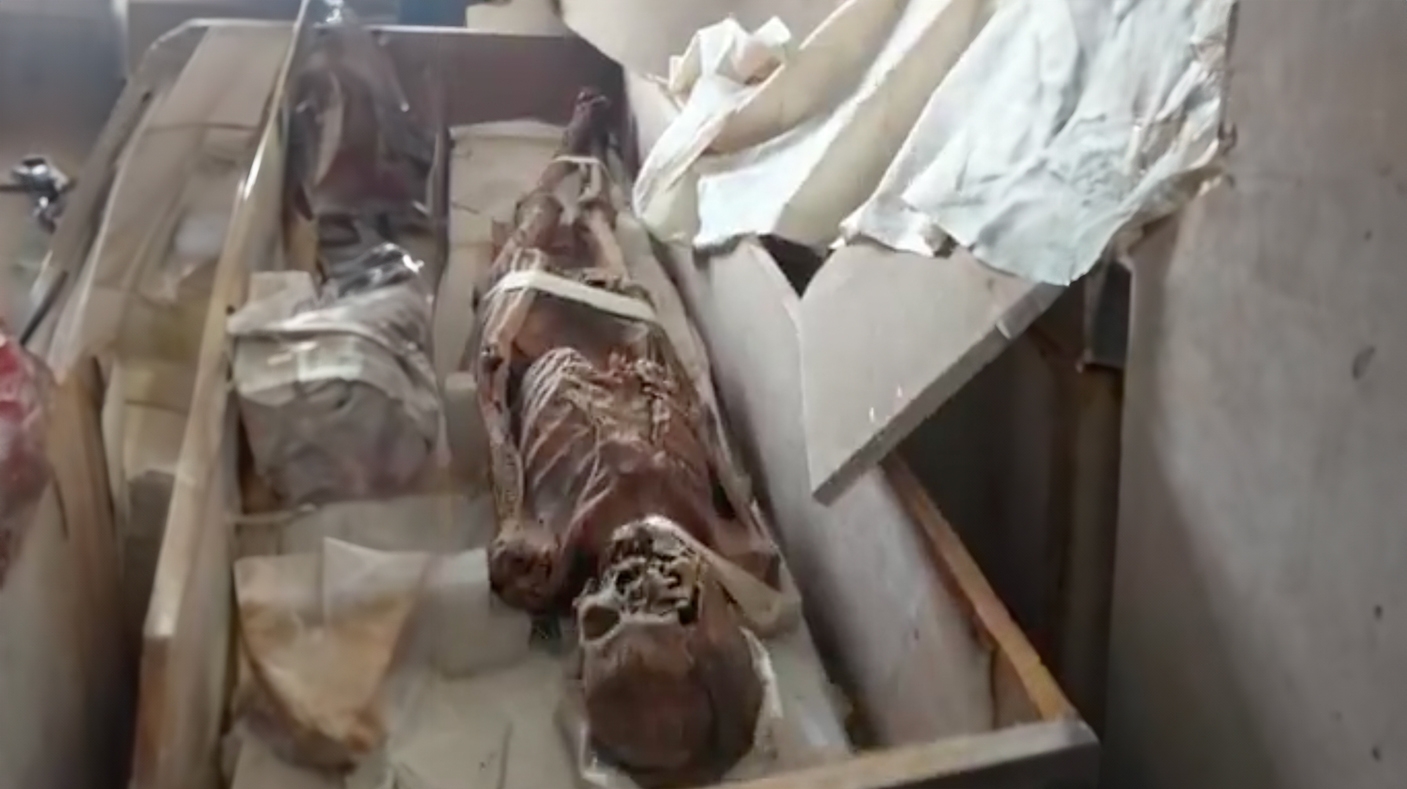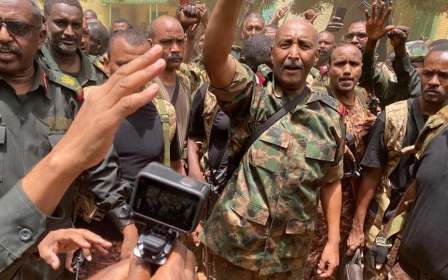Sudan's RSF raids museum and declares ancient skeletons murder victims

Fighters from Sudan's Rapid Support Forces (RSF) paramilitary have raided a museum in Khartoum, rummaging through the ancient human remains on display there and declaring them the victims of former president Omar al-Bashir and his administration.
In a video posted on Friday, the soldiers are seen entering the M Bolheim Bioarchaeology Laboratory in Sudan's capital, where they inspect the bones and skeletons, which are thought to date from 3300-3000 BCE.
On their way through the site, the RSF fighters claim that "the corpses" are "the work of kayzan", a term used to describe anyone affiliated with Bashir and his Islamist backers, who came to power in a coup in 1989 and was removed in April 2019 following a democratic uprising.
The Khartoum site was founded by Sudan's National Corporation for Antiquities and Museums and the British Museum in 2019.
New MEE newsletter: Jerusalem Dispatch
Sign up to get the latest insights and analysis on Israel-Palestine, alongside Turkey Unpacked and other MEE newsletters
Many of the remains displayed date to the Kerma culture, which thrived in ancient Nubia (parts of present-day northern and central Sudan) from around 2500 BCE to 1500 BCE, and the Kingdom of Kush (1070 BCE - 550 CE) centred along the Nile valley.
More than 100 languages were spoken in the multi-ethnic Kingdom of Kush. Sudan is also home to 200 pyramids, almost twice the number in Egypt. Middle East Eye has written to the British Museum for comment.
In a scene that could have come straight from Hollywood films The Mummy or Night at the Museum, the soldiers declare that "these are all corpses" and go on to say that "fear will be buried".
On Facebook, Omdurman resident Mohamed Imam said that because the bones are thousands of years old, this was the first time that "the kayzan is innocent of murder".
War broke out in Sudan on 15 April, when the RSF launched an attack on Sudanese army targets, including the official residence of the country's de facto ruler, Abdel Fattah al-Burhan. Fighting has barely stopped since, with thousands of people thought to have been killed and 1.4 million forced to leave their homes.
Cultural institutions have not been spared the artillery bombardments and air strikes. Moataz al-Fateh Ismail, a Sudanese artist, told Middle East Eye he had been trapped inside the National Museum of Sudan for 15 days. He was forced to live off water, the materials he makes his art with and lemons from a nearby tree.
On 26 April, Sara Abdalla Khidir Saeed, director of the Sudan Natural History Museum, drew attention to the grave danger faced by the country's museums because of the war. "Museums are now without guard or censorship to protect them from looting and vandalism," she wrote in a letter.
Saeed pointed to the endangered situation of the National Museum, the Ethnographic Museum, the Republican Palace Museum, and the Natural History Museum, all of which are in the centre of Khartoum.
The "corpses" video is thought to have been taken by an RSF fighter. The idea that Bashir's old guard - the kayzans - are behind Burhan and the army is a staple of the paramilitary's propaganda. It seems as though they are now looking to mobilise for a night of the living dead.
Middle East Eye delivers independent and unrivalled coverage and analysis of the Middle East, North Africa and beyond. To learn more about republishing this content and the associated fees, please fill out this form. More about MEE can be found here.





